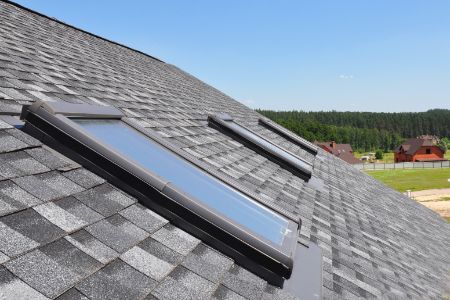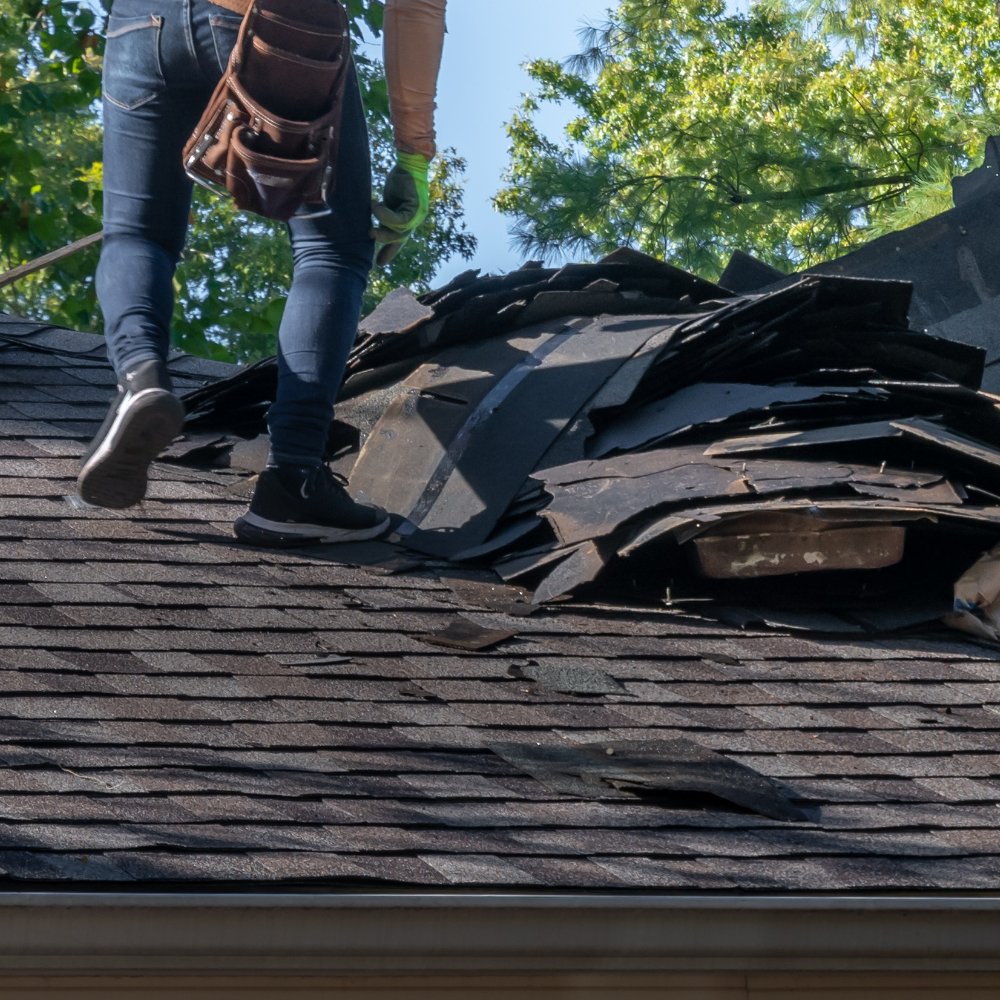What Factors Impact the Expense of Your Roof Replacement and Exactly How to Price quote Them
Understanding the expense of roof substitute includes a complex approach that accounts for various influencing elements. Labor costs and geographic considerations can substantially change your spending plan.

Roofing Product Choices
When thinking about a roof substitute, the choice of roof materials plays a vital role in both the visual allure and durability of your home. Picking the right product can significantly affect the total cost of your project, as different alternatives differ in toughness, rate, and maintenance demands.
Steel roof uses remarkable sturdiness and can last 40 to 70 years, making it an attractive long-lasting investment. The initial price is greater compared to asphalt (Free Roof Estimate).
For an extra standard look, wood shakes give all-natural charm but require normal upkeep to stop rot and bug damage. Slate and floor tile roof covering, while extremely durable and sensational, are amongst one of the most costly options and often call for customized installment. Eventually, the choice of roof covering product ought to align with your budget, environment factors to consider, and personal design preferences, as each product provides one-of-a-kind advantages and disadvantages that can affect the total expense of your roof replacement.

Roofing Size and Intricacy
Thinking about the intricacies of roofing size and intricacy is important for properly estimating the expense of a roofing system substitute. The total area of the roof covering directly affects product and labor expenses; bigger roofing systems normally require more products and might require added workforce to complete the work efficiently. An exact dimension of roof measurements, consisting of the pitch and slope, is important, as steeper roof coverings typically call for specialized safety devices and strategies, further boosting prices.
Intricacy also plays a considerable duty in determining expenses. Roofings with numerous elements, such as gables, valleys, and dormers, involve more intricate designs and cuts, demanding higher skill levels and extra labor. Furthermore, roofings with unusual forms might call for tailored products or installment approaches, which can rise prices.
Moreover, the existing roof condition can affect both size and intricacy. If architectural repairs or support are required, these variables will certainly include to the general cost. Eventually, a precise examination of roofing system size and intricacy not just assists in estimating costs yet additionally makes sure that house owners make notified decisions when intending their roofing replacement projects.
Labor Prices and Accessibility
Labor expenses and availability are critical consider the total cost of roof substitute jobs. Roof Estimate. Experienced labor is essential for making certain the high quality and resilience of the installation, and the prices for such labor can vary substantially based on experience and expertise. Professionals may charge various per hour rates relying on their certifications, and these prices can add up quickly, affecting the total expense of the project
Additionally, the availability of knowledgeable labor can affect timelines and rates. In areas where professional roofer are in high need, labor costs may raise due to competitors for minimal workers. On the other hand, in areas with an oversupply of labor, service providers may provide extra competitive pricing to protect work, potentially reducing general substitute costs.
It is likewise crucial to take into consideration the duration of the job, as longer timelines can cause raised labor expenses. Any type of hold-ups triggered by climate condition or supply chain issues can even more pump up prices. Homeowners should carry out complete study and get numerous quotes to ensure they know the market rates and labor accessibility in their area, permitting more precise budgeting for their roofing replacement.
Geographic Place Effect
Geographic place plays a considerable function in establishing the price of roofing system replacement. Various elements, including local environment, product schedule, and labor prices, are affected by where you live. In regions prone to extreme weather, such as hefty snowfall or storms, home owners might need specific roofing materials and strategies, which can raise general costs. For instance, roofs in locations with high winds might need to be constructed making use of extra long lasting materials, elevating costs.
In addition, material schedule can differ greatly by location. Areas with a robust supply chain may offer reduced product expenses as a result of competition amongst providers, while remote locations may encounter higher costs due to transport prices. Labor rates additionally vary commonly; city areas typically have greater labor prices because of require, whereas country locations might offer much more economical alternatives.

Additional Functions and Upgrades
When planning a roof replacement, numerous house owners might discover that integrating extra functions and upgrades can dramatically boost the total worth and capability of their property. Features such as skylights, photovoltaic panels, and boosted air flow systems not just add to aesthetic charm yet also offer practical benefits like power effectiveness and natural lighting.
Skylights can brighten indoor areas, minimizing reliance on artificial lights, while photovoltaic panels can reduce energy costs and raise sustainability. Furthermore, purchasing a top notch ventilation system can prolong the life-span of the roofing by stopping moisture sites build-up, which can cause costly repairs.
Updated roof products likewise play an essential duty in the general cost. Alternatives such as metal, slate, or building shingles might have higher first costs yet typically provide far better resilience and longer service warranties. Moreover, including rain gutter guards or boosted drain systems can protect against water damage and lower maintenance initiatives over time.
Ultimately, while these extra attributes and upgrades may boost the ahead of time cost of a roof covering replacement, they commonly cause long-term cost savings, boosted energy effectiveness, and boosted residential or commercial property worth, making them rewarding considerations for property owners.
Verdict
Finally, the cost of roofing system substitute go to this site is affected by a selection of factors, including the option of roof materials, the size and intricacy of the roofing, labor prices, and geographical location. Additional features and upgrades even more affect the general spending plan. Recognizing these variables is essential for accurate cost estimation and efficient job planning, eventually guaranteeing that house owners are well-prepared for the monetary ramifications related to roofing substitute.
Thinking about the ins and outs of roofing dimension and complexity is important for accurately estimating the cost of a roof substitute. The complete area of the roof covering directly influences material and labor prices; bigger roofings naturally require more products and might necessitate additional labor force to finish the job efficiently. Inevitably, an exact examination of roofing system size and intricacy not only helps in approximating expenses but also makes certain that house owners make notified choices when intending their roofing replacement tasks.
Regions with a durable supply chain might provide reduced material prices due to competitors among distributors, while remote areas might deal with higher rates due to transportation prices.In final thought, the cost Roof Replacement Estimate of roofing replacement is affected by a variety of variables, including the selection of roof products, the size and intricacy of the roofing system, labor prices, and geographic area.